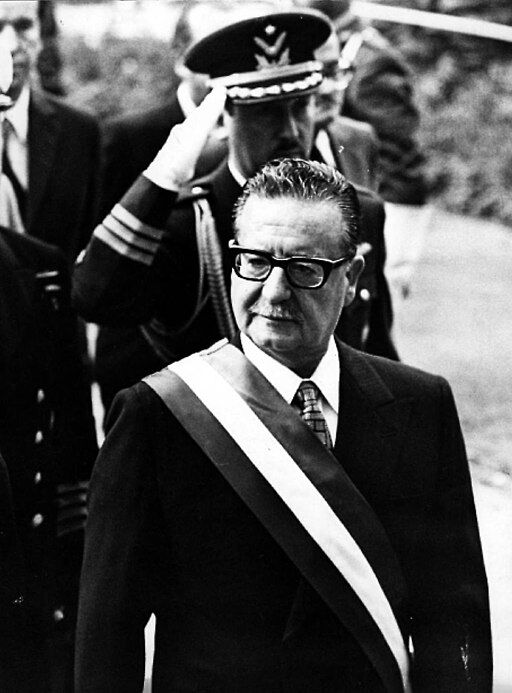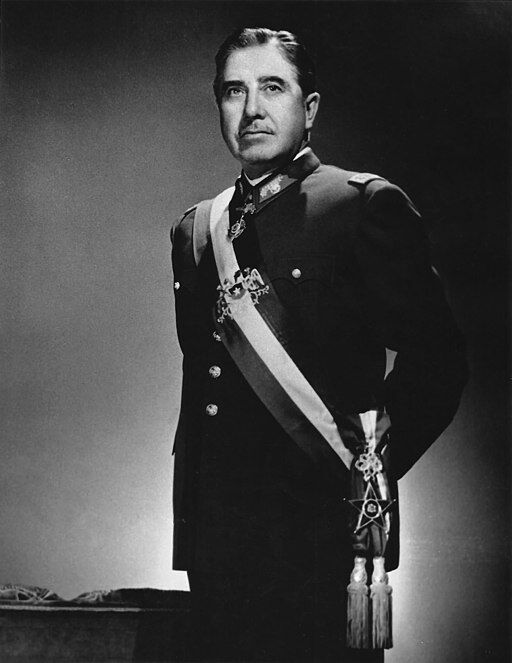Chile is a country located near the Ring of Fire and is frequently shaken by earthquakes. In 1969, it was home to 10 million inhabitants, 2 million of whom lived in the capital, Santiago. Considered the best in the world, copper was the only truly profitable Chilean production. Chile also produced many wines, but did not export them at this time.
In 1932, an attempt was made to nationalize copper and coal production. This lasted only 13 days, after which the leaders shelved the idea.
Chile prepared for elections at the end of 1969. The United States saw the popularity of the left-wing party rising and feared that this party’s election would herald the establishment of a communist regime in South America. It must be emphasized that the United States had been monitoring the political situation in Chile since 1965. This political espionage enabled Washington to predict that the leftist Popular Unity party led by Salvador Allende would win the elections. So, a group of Chilean and U.S. soldiers planned to take power by force if the Popular Unity party won the elections. The United States were willing to support Chilean militias because they better represented American interests. A number of United States agencies, such as the CIA, participated in planning the coup d’État.
On September 4, 1970, Salvador Allende was elected. However, the plan organized by the military and the United States was not implemented. Part of the plan was discovered. In addition, some experts felt that the plan did not take account of the real situation in Chile.
The Popular Unity party wished to establish the country’s independence in international politics. It also drew up a number of economic resolutions that were implemented during its first year in power.

Source: Salvador Allende [Photograph], National Library of Congress - Chile, between 1970 and 1973, Wikimedia commons, (URL). CC BY-SA 3.0 CL
During Allende’s first year in power, 47 private companies were nationalized and farming was reformed by focusing on social ownership. These moves helped Allende to slow inflation, achieve full employment and increase wages by 40%. While these reforms benefitted the middle class, they were not favourable to the business class and foreign investors. The working class also benefitted from these reforms and was therefore opposed to overthrowing the government.
Full employment refers to a country’s labour market when everyone in the active population has a job.
The Christian Democratic Party did not support a possible coup d’État either. Instead, it relied on democratic means to bring down Allende’s government. The party was counting on winning seats in the March 1973 election in order to undermine the government and remove the president by way of a majority of seats in parliament. This party had roots in all social classes, from the working class to the middle class. The Christian Democratic Party allied itself with the far-right National Party which controlled Congress.
The United States imposed an economic blockade on Chile due to numerous expropriations that harmed American economic interests in Chile. In retaliation, the United States stopped exporting certain resources that Chile needed to meet the needs of its population. Soon after the blockade began, Chile ran out of wheat and other resources. The Soviet Union sent wheat via Australia in order to help Chile. It also made bank loans to Chile through European banks. Cuba also collaborated by sending sugar to Chile.
However, the shipments sent by the country’s allies were not enough. People started to criticize the Popular Unity Party’s regime. Protests were organized. Allende sensed that control was slipping through his fingers and that he was losing vital support.
Despite his loss in popularity, Allende was re-elected with an overwhelming majority in March 1973. After the election, the Christian Democratic Party realized that legal means were not enough to change the political situation in Chile. In order to gain strength, the opposition allied itself with all foreign and domestic protest movements. The government, which had no resources at the time, became conflicted and hesitant, fearing the outbreak of a civil war.
A truck drivers strike then paralyzed the whole country. With funding from outside the country (some of it from the CIA), truck drivers were able to prolong the strike long enough to cause the collapse of the Chilean economy. There was no bread, milk or oil anywhere to be found in the country.
The 1973 coup d’État was being mounted and the opposition installed a new military leadership. These were the same officers who had helped prepare the 1969 coup d’État. With the government fearing the loss of control, tensions with the army grew. Allende was accused of limiting the power of democracy.
A military junta led by Augusto Pinochet attacked the presidential palace on September 11, 1973. Salvador Allende died in this attack. Many people thought that he was assassinated, while military officers said he died by suicide. Thirty-nine years later, the Santiago Court of Appeals officially confirmed the hypothesis that Salvador Allende took his own life on September 11, 1973 (Agence France-Presse, 2012).
A military junta is a military group that takes power by force and controls a country with authoritarian leadership.
A state of emergency was declared after the attack on the presidential palace. This decision involved shutting down Congress, banning unions, censoring the press, abolishing the constitution and instituting a curfew. All power was concentrated in the hands of the army and the new president, Augusto Pinochet, who controlled both the justice system and the army.
The new sitting government quickly re-privatized all of the companies that had been nationalized. Exports resumed and foreign capital investment increased. These decisions put an end to inflation, which had been growing since the American blockade. Chile’s economic growth recovered and a liberal economic policy was introduced.
Pinochet’s regime was considered a military dictatorship. Among other things, it established heavy censorship of literature and the arts.

Source: Augusto Pinochet Ugarte [Photograph], around 1974, Chilean Minister of Foreign Relations, Wikimedia commons, (URL). CC BY 2.0 CL
A severe economic crisis shook the country in 1982. Pinochet authorized the creation of other political parties in 1987 in response to increasing criticism of his regime. He also allowed exiles to return and eased up on censorship.
In 1988, Pinochet organized a vote asking the population to allow him to extend his presidency until 1997. Fifty-five percent of the population said “no.” Since he was unable to extend his presidency, Pinochet agreed to new presidential elections in 1989. However, the Christian Democrat, Patricio Alywin Azocar, won the election. Pinochet remained commander of the land army until 1998. He was arrested in 1998 to stand trial for injustices and executions perpetrated during his time in power but was never tried for these crimes for various reasons.
Si tu veux en savoir plus sur les évènements qui ont suivi l’arrestation d’Augusto Pinochet, consulte l’article Les rebondissements de l’affaire Pinochet (1998-2006).
Agence France-Presse. (2012, September 11). Mort d’Allende : une enquête qui aura duré 39 ans. La Presse. https://www.lapresse.ca/international/amerique-latine/201209/11/01-4573036-mort-dallende-une-enquete-qui-aura-dure-39-ans.php
Biblioteca del Congreso Nacional - Chile. (Between 1970 and 1973). Salvador Allende [Photograph]. Wikimedia commons. https://commons.wikimedia.org/wiki/File:Allende_1970-1973.jpg
Ministerio de Relaciones Exteriores de Chile. (circa 1974). Augusto Pinochet Ugarte [Photograph]. Wikimedia commons. https://commons.wikimedia.org/wiki/File:Augusto_Pinochet_foto_oficial.jpg